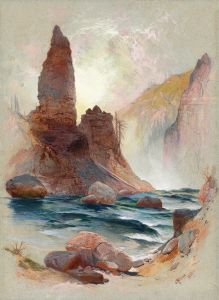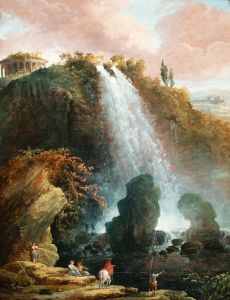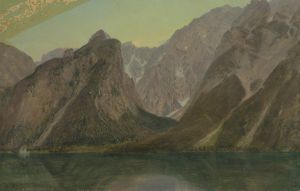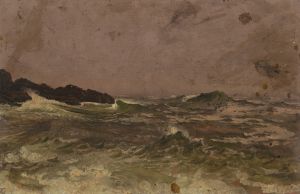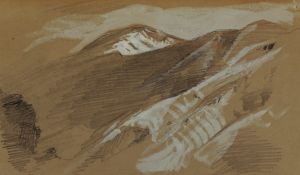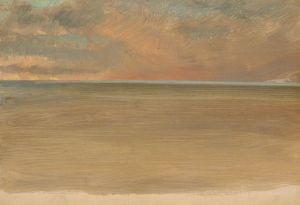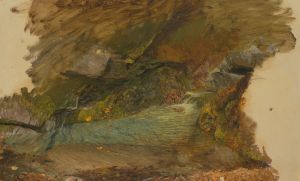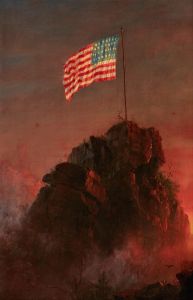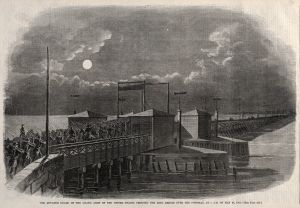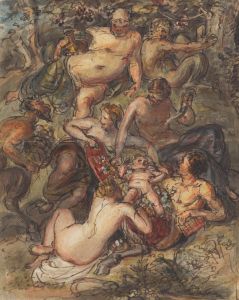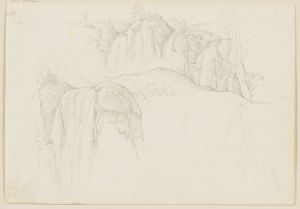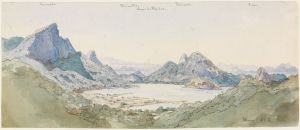
Rainy Season in the Tropics
A hand-painted replica of Frederic Edwin Church’s masterpiece Rainy Season in the Tropics, meticulously crafted by professional artists to capture the true essence of the original. Each piece is created with museum-quality canvas and rare mineral pigments, carefully painted by experienced artists with delicate brushstrokes and rich, layered colors to perfectly recreate the texture of the original artwork. Unlike machine-printed reproductions, this hand-painted version brings the painting to life, infused with the artist’s emotions and skill in every stroke. Whether for personal collection or home decoration, it instantly elevates the artistic atmosphere of any space.
"Rainy Season in the Tropics" is a renowned painting by the American landscape artist Frederic Edwin Church, completed in 1866. Church was a central figure in the Hudson River School, a mid-19th century American art movement characterized by its detailed, romantic portrayal of the American landscape, often imbued with a sense of the sublime.
The painting measures 56 x 84 inches and is an oil on canvas. It is currently housed in the Fine Arts Museums of San Francisco. "Rainy Season in the Tropics" is celebrated for its dramatic depiction of a tropical landscape, capturing the lush, vibrant environment with meticulous detail and vibrant color.
Church's inspiration for this painting came from his travels to South America, particularly his expeditions to Colombia and Ecuador in the 1850s. These journeys were influenced by the writings of the German naturalist and explorer Alexander von Humboldt, whose works inspired many artists and scientists of the time to explore and document the natural world.
In "Rainy Season in the Tropics," Church masterfully captures the essence of the tropical environment. The painting features a dramatic sky, with dark, looming storm clouds juxtaposed against a brilliant rainbow, symbolizing the transient nature of tropical weather. The landscape below is lush and verdant, with dense foliage and towering palm trees, reflecting the rich biodiversity of the region. A river winds through the scene, adding a sense of depth and movement to the composition.
One of the most striking aspects of the painting is Church's use of light and color. The contrast between the dark storm clouds and the bright rainbow creates a dynamic and visually arresting image. Church's attention to detail is evident in the intricate rendering of the vegetation and the play of light on the water and leaves. This meticulous approach not only showcases his technical skill but also conveys a sense of awe and reverence for the natural world.
"Rainy Season in the Tropics" is often interpreted as a celebration of nature's beauty and power. The painting reflects the Romantic era's fascination with the sublime, the idea that nature's grandeur can evoke a mixture of awe, wonder, and sometimes fear. Church's work invites viewers to contemplate the majesty of the natural world and the fleeting moments of beauty that can be found within it.
Throughout his career, Frederic Edwin Church was known for his ambitious and large-scale landscapes, often depicting exotic and remote locations. His works were highly popular during his lifetime, and he achieved significant acclaim and financial success. Today, Church is regarded as one of America's greatest landscape painters, and his works continue to be celebrated for their beauty, technical mastery, and ability to evoke a deep emotional response.
"Rainy Season in the Tropics" remains a testament to Church's skill as an artist and his deep appreciation for the natural world. It stands as a significant example of 19th-century American landscape painting and continues to be admired by art enthusiasts and scholars alike.





